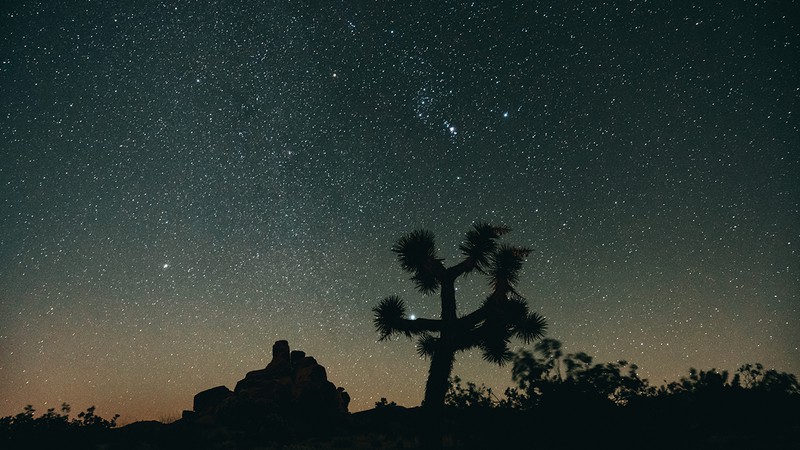Learn about light pollution and how to enjoy the night sky.

Joshua Tree National Park is a great place to spend International Dark Sky Week, but even closer to home there are activities one can do to appreciate heavenly bodies. Jack J. Ross Shutterstock.com
It’s time to turn off the lights, baby. International Dark Sky Week is upon us!
What is International Dark Sky Week? It is a growing international movement dedicated to educating the public about the negative effects of light pollution while also encouraging time outdoors to explore the cosmos in all its glory.
International Dark Sky Week 2022 kicks off April 22 to coincide with Earth Day and extends to April 30, with virtual and local events held globally. On its website, the International Dark-Sky Association (IDA) explains how unneeded light pollution can disrupt wildlife, waste money and energy, contribute to climate change, and block our view of the universe, which is best seen in complete darkness.
The IDA estimates that light pollution is increasing at twice the rate of population growth, and 83 percent of the global population lives under a light-polluted sky.
The association offers information on how to become an advocate for decreasing light pollution with these six action steps:
Social media is a great place to learn more about what others are doing to celebrate International Dark Sky Week, particularly by searching the hashtags #IDSW2022, #DarkSkyWeek, or #DiscoverTheNight.
In terms of events, there are a few virtual options and California options worth exploring. The association’ website has a sampling of events around the world that demonstrate the emergence of this new movement. On April 22 at 8:30 p.m. (Beijing time), the IDA will live-stream the annual Lyrid meteor shower from China. The live stream, which will last approximately four hours, can be seen on Facebook and YouTube.
The Santa Ysabel Nature Center in Santa Ysabel, Calif., will host a Dark Skies Exhibit on April 23 that will showcase projected images of nighttime photography taken by local astronomers on a big screen. The event will run all day and more information is available here.
And of course it is recommended that anyone, including Californians, head into the great outdoors to experience the lowest levels of light pollution possible. The moon will be transitioning from a third quarter into new moon status from April 23 to April 30, with the new moon being the optimal time to stargaze with the least possible moonlight.
National parks are great spots to stargaze; just make sure that you have clear weather conditions as well. Check out IDA’s list of International Dark Sky Parks—which include Anza-Borrego Desert State Park, Death Valley National Park and Joshua Tree National Park in California—to see which national parks earn the distinction of being a “land possessing an exceptional or distinguished quality of starry nights and a nocturnal environment that is specifically protected for its scientific, natural, educational, cultural heritage, and/or public enjoyment.” The IDA also lists dark-sky communities, including two in San Diego County: Julian and Borrego Springs.
If you can’t make it to one of these spots to see the stars, just head as far away from a city that you can get and find a nice lookout to gaze from. Bonus points for bringing a telescope!
And if you can’t get away from the city, you can still participate in IDA’s scavenger hunt, which would be a good way to get children involved. Items in the hunt include a new fact about a nocturnal creature, examples of good and bad lighting, and a planet in the night sky. Download a high-resolution checklist and submit your filled-out forms here. Have fun!
Long form articles which explain how something works, or provide context or background information about a current issue or topic.